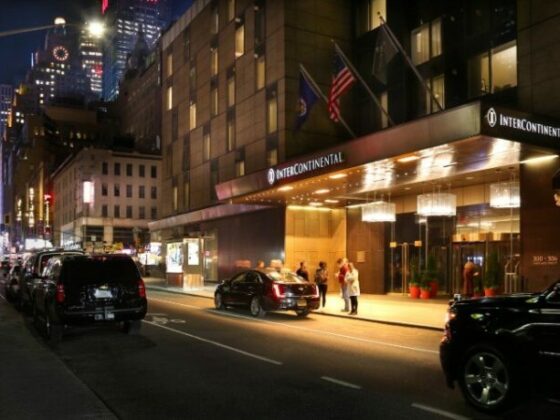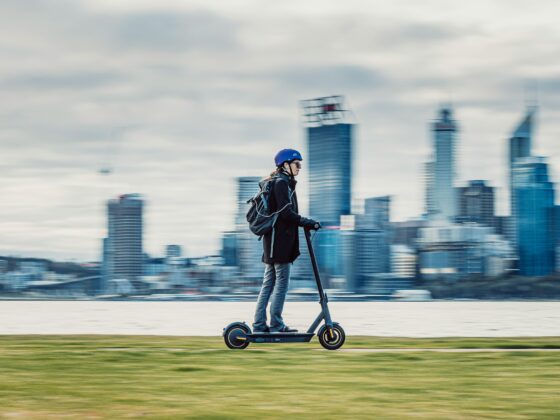
I’ve worked in hotel tech long enough to know that most meaningful changes don’t arrive with a bang. They come in crawling in quietly, before they begin to walk. But they reshape our operations one baby step, one workflow, one guest interaction at a time. But every so often, multiple changes come together in a way that completely redefines the landscape. Right now, we’re seeing exactly that.
A recent conversation with the team at Skift for their article about hotel technology priorities really sparked some reflection. We’re not just seeing one shift; we’re seeing the convergence of several, and together, they’re changing the fundamentals of hospitality. Mobile tools have untethered our teams. Cloud infrastructure has matured. And AI is steadily weaving itself into daily operations. Alone, each of these would be notable, but together, they’re transformative.
From workstation to welcome
Let’s start with something deceptively simple: mobility. In the past, hotel associates were tethered by cords, by systems, by workstations. That made the guest journey highly structured, even rigid. You arrive, wait in line, get checked in from behind a counter.
Today, with cloud technology and the quality of consumer-grade devices like iPads (replacing custom hardware), staff can move freely. They can meet guests at the door, complete check-in during a conversation enroute to the room, and make a dinner reservation on the spot. That’s not just a faster process, it’s a better experience.
The cloud foundation
None of that mobility would be possible without cloud infrastructure. In recent years, true cloud-based PMS and POS platforms have finally become the standard. This change isn’t about tech for tech’s sake; it’s about accessibility, scalability, and reliability. Cloud systems enable real-time updates, connect easily with other tools, and eliminate the downtime and limitations of legacy on-premise systems.
More importantly, cloud infrastructure unlocks faster innovation. It lets hotels test and deploy updates without disruption, ensures data security through modern protocols, and forms the backbone of everything from loyalty platforms to contactless payments.
AI is coming fast
AI gets most of the headlines, and rightfully so. We’re seeing rapid gains in areas like profile matching, guest preference prediction, review responses, and even smart room assignments. All of these bring 10–20% efficiency gains to common tasks. But let’s not confuse excitement with readiness.
Too often, I see hotels investing in flashy new technology initiatives before modernizing their core systems. Without a flexible, secure, cloud-based PMS, AI integrations become fragile at best, and counterproductive (and often expensive) at worst. Before chasing the promise of predictive guest preferences or hyper-personalized offers, hoteliers need to ensure they have strong, open APIs and secure data pipelines in place.
Making it work: Where to focus now?
So what does this all mean in practical terms? For hotel leaders, the convergence of mobile, cloud, and AI isn’t just a tech story; it’s a strategic opportunity. But it only pays off if approached with the right priorities and sequencing.
- Modernize the foundation. A cloud-based PMS is no longer optional; it’s the enabler of everything else. Without it, mobility doesn’t scale and AI can’t connect where it needs to.
- Empower your teams. Mobile tools should be more than convenience features; they should redefine how staff interact with guests. This means rethinking workflows, redesigning lobby experiences, and training staff to feel confident and capable using mobile devices.
- Use AI to reduce friction, not replace people. Start small: automate routine responses, improve data hygiene, and unify guest profiles. Measure success not in reduces headounts, but in time saved and how that time is reinvested in guest care.
What to watch out for
It’s easy to get distracted by novelty. But some of the most common pitfalls we see are entirely avoidable:
- Implementing AI without fixing the basics (like outdated infrastructure or poor data hygiene).
- Deploying new tech without staff buy-in or training.
- Pursuing personalization without a clear guest benefit.
- Prioritizing cost savings over service improvement.
Technology should never feel like a burden for the team, and certainly not for the guest. Done right, it fades into the background, allowing great service to shine through. Looking at luxury brands like Peninsula is a model for many to learn from.
Why this matters
The real promise of these technologies isn’t operational efficiency, it’s experiential differentiation. When used intentionally, they create space for deeper hospitality. They free associates from the screen and allow them to focus on the guest. They make service feel effortless and personal, even at scale. For those who know me, you know I began my career behind the front desk in a Hilton. Being with the guest was always the most rewarding part of the job.
Luxury brands have long invested in this kind of attentiveness. Now, with the right tools, even select-service hotels can offer a version of it. That’s what levels the playing field and that’s what makes this moment so exciting.
In 2025, the hotels that thrive won’t necessarily be the ones with the flashiest tech. They’ll be the ones that use technology to make guests feel truly seen, supported, and remembered. That’s the future we’re building toward. Let’s make sure we do it right.






